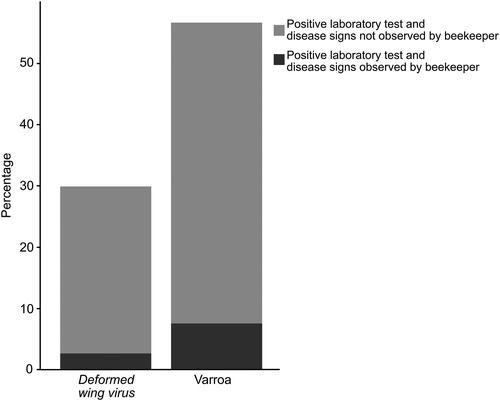Figures & data
Figure 1. Prevalence of Varroa and honey bee pathogens in Sweden 2016. Acute bee paralysis virus (ABPV), Deformed wing virus (DWV), Melissococcus plutonius (MP), Paenibacillus larvae (PL), and Varroa destructor (Varroa).

Table 1. Summary of questionnaire answers related to at least 2,185 colonies in Swedish apiaries surveyed in 2016. In 8 out of 376 study apiaries there was no information on the number of colonies.
Figure 2. Bar plots comparing the percentage of apiaries tested positive for Varroa and DWV in laboratory assays and the percentage of beekeepers who observed Varroa or any disease signs related to DWV.

Table 2. Results from the logistic regression models for risk factors associated with the outcomes high Varroa infestation (≥3 mites per 100 bees), high Deformed wing virus (DWV) virus loads (≥107 virus copies per bee), and Paenibacillus larvae infection.
Table 3. Results of a logistic regression model for risk factors associated with winter colony losses in Swedish apiaries.
